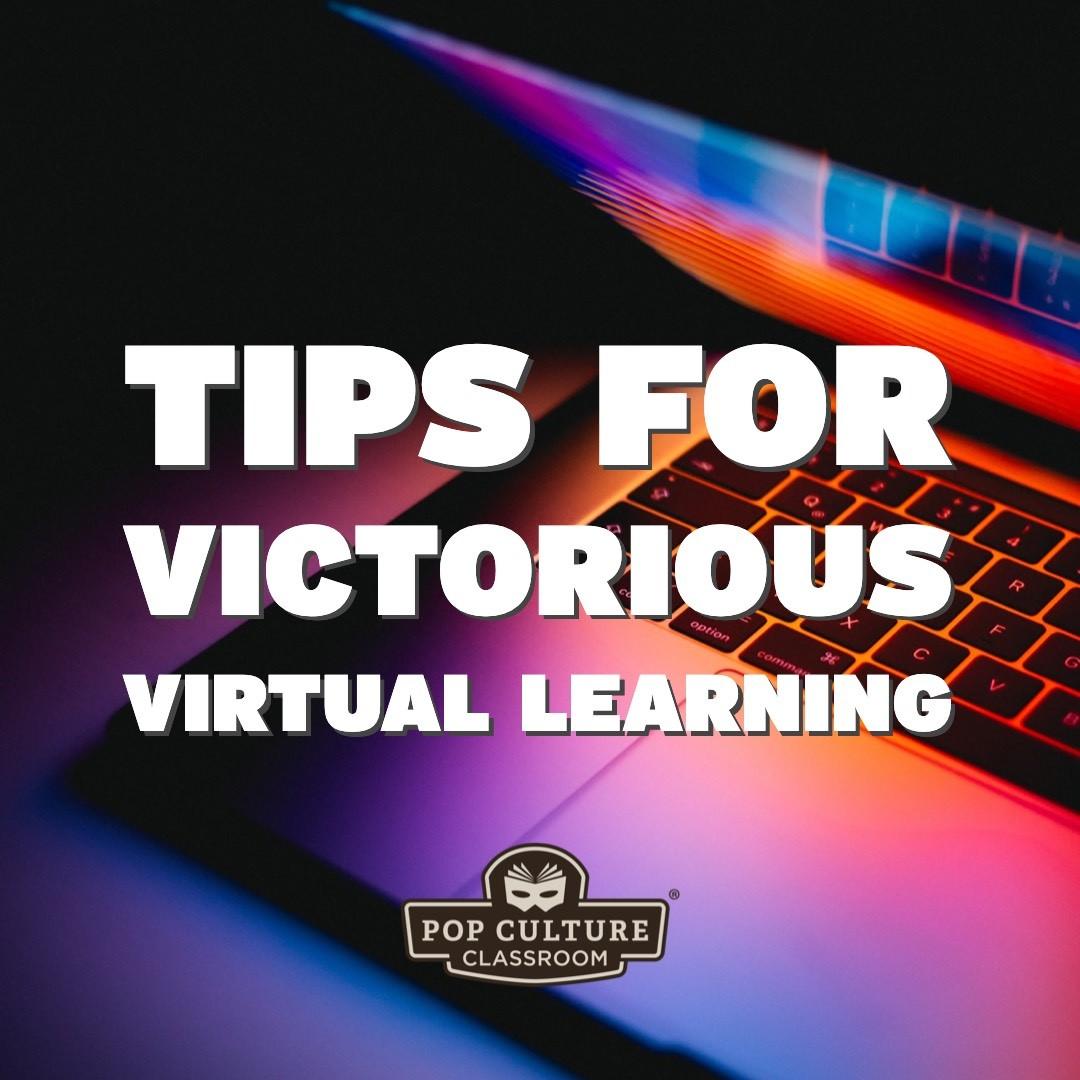Exploring Interactive Storytelling through Batman: A Death in the Family(Plus 7 More Interactive Stories)
By Erik Jacobson, PCC Instructor
Ask any educator or parent: the 2020-2021 school year is going to be a unique and challenging one.
Right now, virtual learning is more important than ever. That’s why Pop Culture Classroom has put together these tips to help make your home, distance, or remote learning efforts more successful.
Meeting the Moment with Virtual Learning
As a 4th grade teacher at a STEM school in the Denver metro area, I experienced many of challenges related to virtual learning and instruction myself at the end of the last school year.
Whether it’s technical problems, waning engagement, or confusion about how to turn in assignments, virtual learning will inevitably come with a learning curve.
Tips for Success
Pop Culture Classroom is here to help you be successful! Check out these six easy tips to making your virtual learning efforts a victory for students!
Establish a Routine and Stick to It
Establishing a routine early will pay off throughout the year. It can be more challenging to do this at home due to parents’ busy schedules. But remember that — once students are an established routine — it takes much less energy to maintain it. Set expectations early on for students, and then hold them accountable for staying on task during work time.
Every day a child attends school, they complete hundreds of tasks with very little direction from the teacher. Are they under a magic spell? No, their teachers just took the time to establish a routine early in the school year.
Set Up a Quiet Workspace
Choose a learning space in your house that is quiet, comfortable, well-lit and free of distractions. Set up the expectation that students should not be interrupted while working there. In homes with several siblings, this may mean that children need to share this space on a schedule.
Many students naturally gravitate towards locations with lots of activity and social interaction. They’ll plop down their school laptop in front of the TV or next to siblings playing a board game.
However, I find that few elementary students have the skills to stay on task in such an environment. This can mean that an assignment that takes 20 minutes stretches into hours, and can it burn students out, because school is never ‘over’.
Check in Frequently
Set reasonable checkpoints on key assignments (e.g. 4 slides of a presentation). If an agreed progress checkpoint has not been made, have the student work where you can see their screen to monitor how they’re actually spending their time.
Few things are more frustrating than when an assignment that a student assured you was ‘almost done’, turns up with a failing grade, or worse, a 0.
You probably don’t have time to check every single assignment that students are working on every day. However, checking a randomly selected sample each day will help develop a student’s responsibility and accountability.
Make sure to praise progress and consider reinforcing good work habits with appropriate rewards.
Get to Know your Child’s Main Online Learning Platform
Most schools make use of a host of online learning platforms. Even as an experienced teacher, I struggle to keep up with all of them! Most schools, however, make use of a core platform, like Canvas, Edmodo, Class Dojo, Google Classroom or Schoology to manage students virtual learning. These platforms offer a host of tools to track assignment completion and plan weekly schedules.
If you can’t find out how to do something using the platform’s help page, try a Google or YouTube search with what you’d like to accomplish. For example, “How do you find missing assignments on Canvas?”.
Keep Assignments Simple
If your student’s assignments leave you scratching your head, reach out — or better yet, have your child reach out — to the teacher with specific questions.
Chances are that you are not the only one who has them! I was very grateful to students who reported broken links and missing videos in my assignments last spring.
When too much of this time is spent trying to figure out how to use a new learning platform, use cumbersome presentation tools, or understand an assignment’s expectations, little time is left for learning. Students and parents can end up feeling frustrated and defeated.
The goal of online learning should be for students to use most of their ‘school’ time learning content and developing skills. Teachers can help by ensuring that students spend most of their time engaging with the content of the lesson, even if that means they are using simpler tools.
Make Use of Pop Culture Classroom’s Virtual Learning Opportunities
Pop Culture Classroom has a host of resources available on our website to help keep students engaged and develop reading and art skills, many of which are 100% free!
Offering these as rewards or breaks provides a refreshing change of pace and chance for creativity. Or, you could use some of the Graphic Novel Teaching Guides to supplement or enhance your child’s Literacy course.
We hope these tips help you make your students’ virtual learning more productive and rewarding!
Erik is an instructor at Pop Culture Classroom. He also teaches fourth grade at a STEM school near Denver.
Pop Culture Classroom
9am-5pm Monday-Friday


